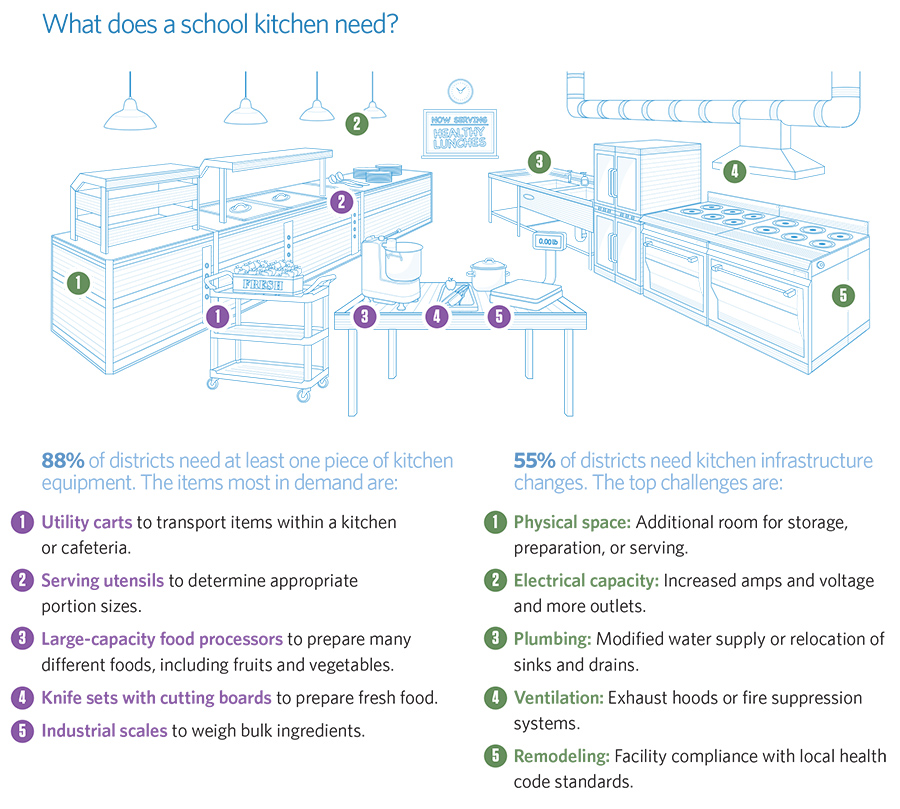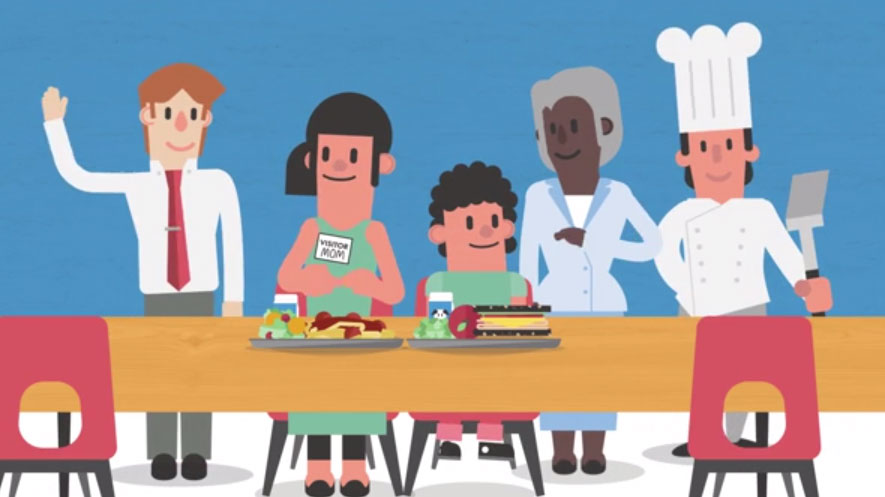Give Schools the Tools to Prepare Healthy, Delicious Meals
The School Food Modernization Act
This fact sheet was updated on July 30, 2015 to reflect current legislation.
Overview
Children spend more time in school than anywhere else except their homes. And 3 in 5 students—more than 30 million children—eat one or two school meals daily. Clearly, by serving healthier meals and snacks, schools can help American children establish sound nutrition and eating habits for a lifetime.
The good news is that the vast majority of schools in every state are meeting stronger national nutrition standards and serving meals with more fruits, vegetables, and whole grains and less fat, sugar, and salt. Many schools are preparing wholesome, delicious meals despite having inadequate cooking facilities that lack the right tools. Instead, they rely on costly and inefficient workarounds to create meals because their outdated kitchens were designed to do little more than reheat prepackaged items. Schools need facilities and staff capable of robust and cost-efficient cooking with healthier, fresher ingredients.
To help school districts serve nutritious and appetizing food, Pew supports the School Food Modernization Act. This bicameral, bipartisan legislation, authored by Senators Susan Collins (R-ME) and Heidi Heitkamp (D-ND) Congressmen Lou Barletta (R-PA) and Mark DeSaulnier (D-CA) would expand schools’ access to modern kitchen equipment and infrastructure and strengthen workforce training.
How it would work
- Establish a loan assistance program within the U.S. Department of Agriculture to help schools acquire new equipment. School administrators and other eligible borrowers could obtain federal guarantees for a portion of the loan in order to construct, remodel, or expand kitchens, dining facilities, and food storage infrastructure.
- Provide targeted grant assistance to give school administrators and food service directors the seed money for less extensive infrastructure upgrades or purchases of high-quality, durable kitchen equipment such as commercial ovens, steamers, and stoves.
- Strengthen training and provide technical assistance to school food service personnel, many of whom need additional skills and expertise to prepare healthier meals. The proposed legislation would authorize USDA to furnish support on a competitive basis to highly qualified third-party trainers to develop and administer training and technical assistance.










